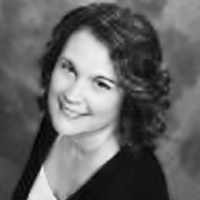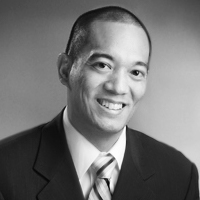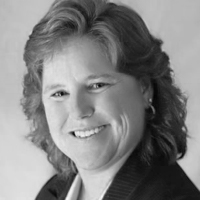Editor’s Note: This text course is an edited transcript of a Widex live webinar on AudiologyOnline.
This seminar will be a run-through of the highlights of the Widex UNIQUE hearing aid, as well as some of the things we have done to improve this technology over our past technology.
Learning Objectives
After today’s course, you will be able to list the models, levels, and technology available in the Wide UNIQUE product. You will be able to describe some of the new features in the Widex UNIQUE product and how they benefit patients. You will also be able to explain how to determine the best product recommendations for your patients.
I love the name of the product, UNIQUE. Every situation and patient is unique. Some patients have similar audiograms, or they list the same complaints such as not being able to hear their grandchildren or their spouse, or a family member told them they had to come in because they have difficulty hearing in noise. However, each individual patient has a unique situation or story that makes it personal. At Widex, we strive to make hearing aids that will provide the best possible hearing in all of their situations, not just standard, everyday situations. The UNIQUE hearing aid is designed to help people hear in the everyday listening environments and also the extreme listening environments that are unique to that individual patient. Our goal is to help people hear better in their every day life, but also in those extreme and unique situations.
Widex Legacy
Widex has a long legacy, for a number of reasons. Number one is sound quality and the ease of listening. Those of you who have worked with Widex know what our hearing aids sound like. If you are new to Widex, we welcome you to try our product, and you will learn that there is a specific Widex sound; our number one goal is ease of listening.
The goal of the engineers at Widex is to make sound as close to natural as possible. We are true to audiology. We are true to the principles of hearing health care. We preserve audibility; it underlies our features, our algorithms, and prescriptions.
Widex holds many patents for technology that we have developed. We are always striving for new technology. Widex Link, our own proprietary wireless form of transmission, is the only wireless transmission made for hearing aids. Everything in UNIQUE contains the core values of Widex: audibility, comfort, understanding, and preserving those audiological and technological features.
Some people say, “Hearing aids are really good today.” Yet others say, “All the hearing aids are the same.” So what is the difference in those two statements? If I asked you about the hearing aids you work with, you would all say they have wind noise management, wireless technology and feedback cancelling. While we each may do something different in our manufacturing and technology processes, at the end of the day, you have to decide what helps your patients hear better and what provides them with the best possible hearing for their situation in their life.
UNIQUE
The Widex UNIQUE tagline is “Live Life Large.” Go to the extremes and do not think that you cannot do it. Our goal with UNIQUE is for patients to live life the way they want to live. We need to stop putting boundaries on everything we offer them.
Capture Everything
There are four basic principles that we employ with this product. First, we believe in capturing everything. That means making a hearing aid that provides the best analysis of the environment. We can only process sound as good as what we capture and hear. A hearing aid hears the environment. How accurate is it when hears? The number one principle of the UNIQUE is to capture everything.
Purify
We want to purify the sounds. There are sounds that we do want our patients to hear and other sounds we do not want them to hear, specifically those that may cause distortion. We want to purify sound, so that when it is processed, it is clean and advantageous to the patient’s listening situation. Then we are going to process it seamlessly. Widex believes in no transitions, no pumping, and no artifact. This is done through the algorithms that we have created for this product. Widex believes in sacrificing nothing for the sound quality. We give them every opportunity to have a pure signal and to hear without thinking about it.
The first thing that is important in capturing everything is the input dynamic range. In our Dream hearing aid, we introduced the broadest input dynamic range in the industry. We know that sounds occur both at very soft and very loud ends of the spectrum. Currently, another manufacturer has an input limit of 106 dB SPL. That is very high. This is what can the hearing aid hear and listen to accurately. There is another manufacturer who has a 106 dB SPL linear transfer function. This means those microphones and the analog-to-digital (A/D) converter can hear up to 106 dB SPL and keep that signal linear so that it is processed without distortion. In the Dream, we took the lower limit down to 17 dB SPL. That allowed us to hear more soft speech. If you want someone to hear a whisper or even at a distance, you have to hear soft speech.
In the UNIQUE, we have raised the bar. Our upper limit is 113 dB SPL; that is similar to what it was in the Dream. Our lower limit is now down to 5 dB SPL. This gives us a range of 108 dB. This means our hearing aids accurately hear and analyze the environment in a linear manner up through a 118 dB input dynamic range. To maintain the purity of the sound, we do not clip or compress before 113 dB. By going down to 5 dB for input, we are able in include unvoiced speech. This gives us the broadest input dynamic range in the industry.
Soft Level Noise Reduction. We have some new features in UNIQUE when it comes to purifying sound. The first feature is something called the Soft Level Noise Reduction. The Soft Level Noise Reduction makes sure that we hear sounds as soft as 5 dB SPL in a linear fashion. That is very soft. We want to do that because that will allow us to hear more soft speech, especially unvoiced soft speech. This is not circuit noise. It is amplification. Widex believes that soft sounds should be audible. If a patient cannot hear a sound, how are they ever going to understand it? Soft sounds must be audible in order for someone to understand it. You have to give them the soft sounds.
One of our core principles is to make sure that conversational speech is comfortable and intelligible, and that loud sounds are not uncomfortable. Every algorithm, every attack and release time, and every compression threshold ratio is based on these three core principles. Soft Level Noise Reduction is helping us to take this to the next level. We have the lowest kneepoints in the industry, and that is going to ensure the audibility of soft speech, including voiceless consonants like /s/ and /sh/.
However, as everyone knows, not all soft sounds are desirable. We need to reduce these soft unmodulated sounds like the steady state sounds, not the voice sounds so that the end result will be better sound quality. That is what we are doing with Soft Level Noise Reduction. We have a sampling rate of over 33,000 times a second. We have18 bits of information in the hearing aid, sampling over 33,000 times a second to correctly identify the sound – either modulated sounds, which are speech, or unmodulated sounds, which are noise.
If the UNIQUE hearing aid detects unmodulated sounds that are softer than 40 dB HL (approximately 62 dB SPL), it will attenuate them. We are not just lowering gain for soft sounds; any manufacturer can do that. That is not what we are doing. We are differentiating the sounds and applying gain differently for those soft sounds.
The advantage for the hearing aid user is the ability to still hear the input range, make sure they are not bothered by undesirable noise in quiet environments, and to have better sound quality. I think you will see a greater benefit in those with mild to moderate hearing loss. Individuals who have moderately severe or severe to profound hearing loss do not complain about this problem as much.
Wind Noise Manager. The second half of our approach to purify is called Wind Noise Manager. In the most recent MarkeTrak study which evaluated hearing aid users (Kochkin, 2009), wind noise is the number two complaint. The number one complaint was understanding in noise.
How does the Widex Wind Noise attenuation work? First, we start with detection. Almost every hearing aid, except for our completely-in-the-canals (CICs), have two mics. As the wind comes in to these two microphones, the hearing aid analyzes and compares the specific signal.
The next step is separation. The hearing aid determines that the sound is coming into one ear, the right ear. The two microphones in the right ear begin to determine in real time if this noise is wind or speech, correlated or uncorrelated. If it is speech, speech hits both microphones, and the signal is almost the same, except for a small difference in timing. This is a correlated noise, which you can see in Figure 1, on the left. In Figure 2, on the right is wind. It is uncorrelated; the two sounds do not match. The sound going into the front and the back mic are not the same because wind noise is completely uncorrelated. It is whirling, spinning around the head. If you have a mic cover on the hearing aid, it gets up under that mic cover and then creates more turbulence.
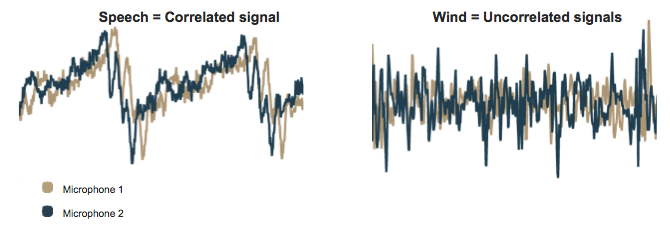
Figure 1. Wind Noise Manager detection stage: correlated signal (speech) on the left v. uncorrelated signal (wind) on the right.
In the third stage, Widex subtracts the uncorrelated noise from the correlated noise. You end up with speech if speech is present. Our wind noise reduction is independent per hearing aid. It does compare across ears and decide which wind noise is less offensive and make adjustments. This feature is available in the UNIQUE 440, which is the premium level.
The benefits of this are improved speech intelligibility. Internal studies have proven an 8.4 dB in signal-to-noise ratio improvement in wind, which is quite significant. Again, this happens per ear. When the wind is blowing right in the middle of your face, both ears are going to react appropriately. There is no need to remove the hearing aids in windy environments, and monaural hearing aid users (people with one hearing aid) are still going to be able to benefit from the wind noise manager. The benefits to you are minimized complaints, better sound quality, and it is available in all styles except the CIC.
Universal Program. The next step is to process seamlessly. Widex believes that there can be one universal program that is geared for all situations, both average and extreme. We want the hearing aid to work at its best. Do some patients need programs? Yes, they do. However, Widex wants to avoid those programs, because it is very difficult for anyone to change a program or access a remote or app in time for the environment as it changes. Widex no longer has the master program; it is called the universal program. This is the main program that patients will use up to 90% of the time.
In this, we are introducing Sound Class Technology. There are three parts: a classifier, an internal controller and a preference control. Other manufacturers have similar terminology for sound classes, but I hope you listen with an open mind about our sound classes.
We have nine sound classes, which are quiet, quiet with speech, party, party with speech, urban, urban with speech, transport, transport with speech, and music. These nine different sound classes all make up the universal program. The sound classes are not frequency response curves. Think about a library. There are thousands of books in a library. If you think about sounds in the environment, there are an infinite number of sounds, in different sound styles and soundscapes. For example, if I am outside my building in downtown Chicago and I hear the wind, this is different from when I travel to North Dakota and hear the wind. The wind in North Dakota is different from the wind on the beach, which is different than the wind on a flat Kansas landscape.
At Widex, we think of sound classes or sound situations. Widex stores hundreds of categories of sound environments in their hearing aids, just like a library stores books. If you walk into a library, what is the first thing you would do if you do not know what you are looking for? Typically, you find a section of interest and then peruse individual titles. Think about sound classes. They are like categories in a library. There are thousands of different parameters that make up the quiet and the quiet with speech sound class. From a hearing aid standpoint, we identify these nine sound classes, but within those sound classes, there are more choices than I could possibly figure out. The number of different adjustments are based on the environment, the hearing loss, the hearing aid, the feedback characteristics, resonance peak, and compliance.
Every input sound is captured first, purified and then categorized into a sound class. The sound classes are separated by two things: comfort and audibility (Figure 3). Comfort is everything other than party or transportation, quiet or music. It is the broadest class. We need to make it comfortable. There is no speech in that signal, so we need to make the hearing aids comfortable. On the other on the other side, with speech in music or speech in a party, they need to have audibility. The UNIQUE looks at what is important to the patient.
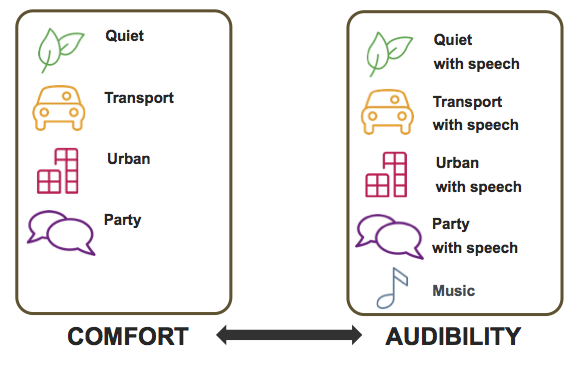
Figure 2. Sound classes where the hearing aid will decide if comfort or audibility is more important.
Classification of Signals
Figure 3 is a summary of the nine characteristics we use to classify a signal. We look at how loud it is. Is there wind noise present? We compare what is happening at each ear, which is called InterEar Coordination. We have the fastest comparison rate at 21 times a second. We examine frequency weighting, specifically the modulation of the frequency weighting. We look at amplitude modulation. Is there a high fluctuation rom soft to normal to loud? These processes are happening constantly and simultaneously. We can do this because our devices capture more sound than any other hearing aid made.
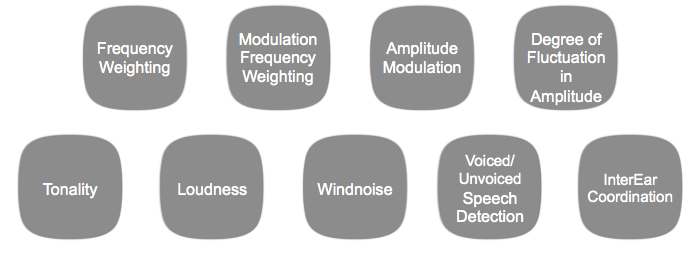
Figure 3. Parameters for classification of a signal.
Speech
In UNIQUE, we use Speech Detector. Not only does it identify modulated sounds as speech, but it also knows that we do not want to miss any unvoiced speech, either. We calculate voiced and unvoiced speech based on the zero crossing frequency of those unvoiced speech sounds. These sounds should not be forgotten.
Internal Controller
Once the sound has been classified, we have an internal controller which changes the hearing aid settings based upon the environment and changes within those environments. We need to maintain the frequency response curve and gain, but we need to adjust other things for comfort and audibility also. The internal controller regulates the sound class system. Customers want to know if you can hear the changes taking place, or what is known as pumping. I have had these hearing aids for a month, and you can hear it make a change, but it is not uncomfortable or abrupt. It is not pumping, and it does not have any distortion.
The hearing aid starts in the quiet sound class when you turn it on. It immediately begins to analyze sounds, looking for different options. It also is always comparing left to right. We want to maintain that interaural level distribution. The point is a seamless process, to preserve audibility, but also provide comfort for the patient as they move into different environments, without having to push a button.
Preference Control
The third part of the sound class technology is called the preference control. There is an internal preference control and an external preference control. The internal preference control is something that the hearing health care professional can adjust. The internal preference control wants to know how you want the hearing aid to work. You are able to set personal preferences based on listening history, data logging or patient report.
The external preference control allows the patient to make adjustments to their intents. Historically, when patients have volume controls and they are in a noisy environment or cannot hear someone, they turn up the volume control and what happens? Everything is amplified. When a hearing aid is too noisy with added volume, and they take their hearing aids out. Volume controls, as we know, simply turn everything either up or down. With the UNIQUE external preference control, when you adjust positive or negative, up or down, you are going to be adjusting audibility versus comfort. There are many different parameters that are involved in this. If they push the up button, it will not turn everything up. It will automatically figure out that in the current situation, it needs to provide more audibility. That may require increasing the functionality of speech enhancement. It may require changing attack and release times. It may require the compression characteristics to change. It may not change gain at all.
If they hit the negative button and they go in a comfort direction, it will make it more comfortable without losing audibility. It will make adjustments to the amplitude and the frequency as needed. This preference control in the UNIQUE is doing what patients have thought it should be doing all along.
There are many different ways to control audibility versus comfort in the UNIQUE product. The fashion hearing aid, which is our traditional BTE, has an ear-level preference control (+ and – on the instrument). The wireless DEX devices that has worked with Clear and Dream will work with the UNIQUE. When you use it with the UNIQUE, it is a preference control. Again, the + button changes audibility to make the signal more clear. The – button does not turn everything down; it will make it more comfortable.
DEX
I would like to talk about a new DEX device that we have introduced, called the COM-DEX (Figure 4).
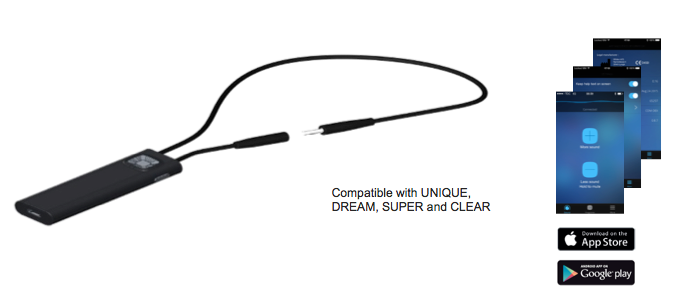
Figure 4. COM-DEX and COM-DEX app.
The COM-DEX uses Widex Link technology. The neckloop transmits via Widex Link to our hearing aids, and then it uses Bluetooth to connect to phones. It works with the UNIQUE products as well as our previous Dream, Super and Clear products. The COM-DEX is backwards compatible. The COM-DEX is worn around the neck as a hands-free solution. It uses Bluetooth, and any phone that has Bluetooth can use the COM-DEX, even an old flip phone.
To place a phone call, you call from the phone; the center button will answer a call if someone calls you and will also disable a call. You can also stream music. If you have an Android or an Apple phone, then you can use the COM-DEX app, which has just been released on Apply and Android platforms. This is a great new product, even for Dream, Super or Clear products also.
The COM-DEX is small at 2 ½ inches tall, ¾ of an inch wide and very slim. It has a “room off” button on the side. That button turns off the hearing aids, but still allows you to hear what you are streaming. To turn it on or activate it, you close the loop. It is off unless you close the loop. As soon as you close the loop, it goes into a pairing mode and it will find your Bluetooth from your phone. If you already have it paired, it takes a couple of seconds to make sure there is nothing else, and it continues to work.
I would encourage you to play with the app. The app has preference control. It has program buttons. It has a zoom feature, which people love. There are many easy-to-use videos and features in the app.
The COM-DEX provides approximately 8 hours of streaming and 8 days standby or control time. As with all of our DEX devices, it does not drain the hearing aid batteries. The app has options for more sound, more audibility, adjustable programs, a focus feature, and a battery indicator showing how much battery life is left in the device. There is not pairing or matching to the hearing aids, only to outside Bluetooth devices. The patient wears it, and it will find their hearing aids.
It comes in three colors: green, silver, and ivory. This is easy to demonstrate in your office. Pair it to your phone and demonstrate it for patients.
Other DEX devices available for this hearing aids are PHONE-DEX, COM-DEX, UNI-DEX, RC-DEX, FM-DEX, CALL-DEX which is relatively new, and TV-DEX (Figure 5). There is no M-DEX with the UNIQUE.
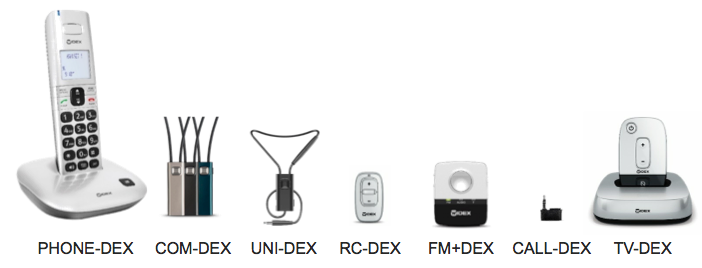
Figure 5. DEX wireless accessories for use with UNIQUE.
UNIQUE Levels and Styles
The UNIQUE is available in all four of our levels: 440, 330, 220, and 110. The UNIQUE 440 does have more features and options than the other technologies. However, the same chip and sound classes are in every product. ZEN, which is our tinnitus management technology, is in every product, as is the COM-DEX and Audibility Extender is available in every product.
UNIQUE comes in the same styles that we have now. It comes in a CIC, which is wireless, and a micro CIC, which is not wireless. It comes in a canal, half-shell and full-shell. It comes in our Passion, which is arguably the smallest receiver-in-the-canal (RIC) hearing aid with the 10A battery. It also comes in a Fusion and Fashion BTE. The UNIQUE is not available in a CROS or a Fashion Power at this time. They have the same ear wires, ear hooks, and tips.
Overall Features
You should notice that this hearing aid does more. It has a better ability to capture sound. It has a broader frequency-input dynamic range. It has a sampling rate of 33,000 times a second with an 18-bit system. It contains four A/D converters.
The battery life of the UNIQUE is better than the Dream. It has approximately 1.0 mA battery drain. The Widex employees who are currently wearing UNIQUE have all reported that they get two to three, and sometimes even more, days of battery life with these UNIQUE hearing aids.
Other additional updates that we do not have time to go into today are a new compression system, a variable speed compressor, a new speech enhancer, and an updated Audibility Extender. Please be sure to attend some of our other AudiologyOnline seminars and ask your local representative to talk with you about the Audibility Extender. There is also frequency transposition, which is a whole new world with the UNIQUE, and we also have a high-frequency boost.
Conclusion
We believe we are breaking sound barriers. Please see the AudiologyOnline course library for more Widex courses on products and fitting software. We also have additional information on Widex Learn, such as videos and articles. From Widex Pro, you can place orders and find other helpful information.
Reference
Kochkin, S. (2009). MarkeTrak VIII: 25 year trends in the hearing health market. The Hearing Review, 16(11), 12-31.
Cite this Content as:
Shaw, J., Antonio, R., & Staverman, L. (2016, February). Introducing the new Widex UNIQUE: Because every situation is unique. AudiologyOnline, Article 16325. Retrieved from https://www.audiologyonline.com.


